As Alex Burke mentioned in last month’s blog post, setting up a view camera in the dark is an enormous challenge. The image on the ground glass is incredibly dim, and it is nearly impossible to see the composition.
Back in 2010, I developed an incredibly simple solution to this problem. Rather than trying to set up my camera in the dark, I found it easier to set up my camera the day before, then leave it in place overnight. For added peace of mind, I stayed with my camera until nightfall, then I logged it into my GPS, and returned to it before sunrise the next morning. This technique works best in wilderness areas where people aren’t likely to find your camera.
Over the course of seven years, my camera spent countless nights perched on the edges of cliffs, miles out on the salt flats, or in slot canyons in the Utah wilderness. Leaving my camera overnight was always a gamble — and that I was certainly putting my equipment at risk — but this technique paid off time and again. Many of my best photos wouldn’t have been possible without leaving the camera in place overnight.
It was during the winter of 2017 that my luck finally ran out. I was camping in Death Valley, and left my camera in place for a morning shot. I weighed it down with a stuff-sack filled with nearly 30lbs of rocks, covered it with my dark cloth, then drove back to my campsite for the night.
I slept in my truck that night, and remember waking up around 2am to the sound of strong wind. My truck was rocked back and forth by the strong gusts, and I had a bad feeling about my camera.
When I returned to my camera the next morning, I found that it had been tossed to the ground. The ground glass was shattered, and the wood frame was broken. Thankfully I had a backup camera with me on that trip, but I knew it was time to re-evaluate my technique of leaving the camera overnight.
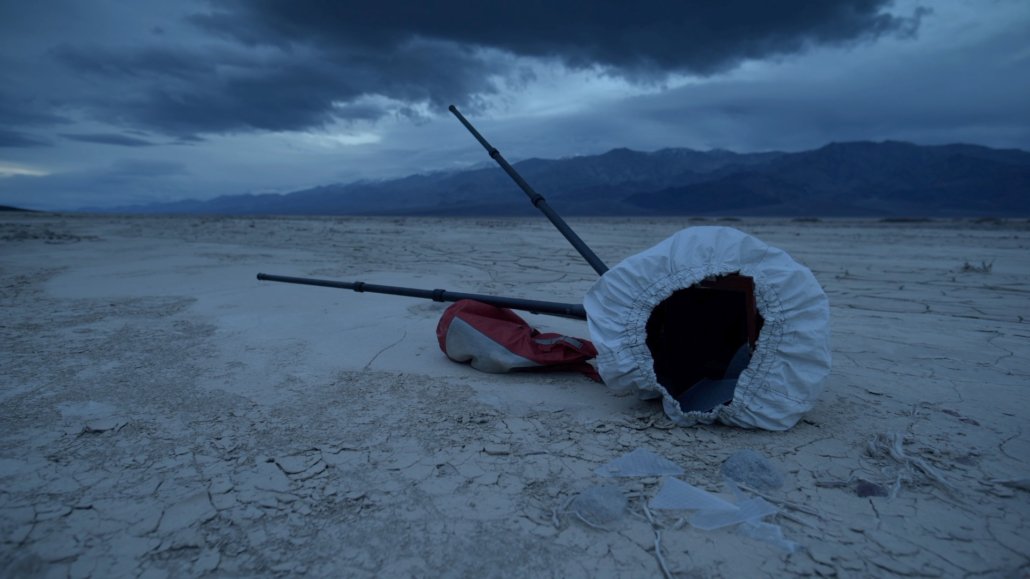
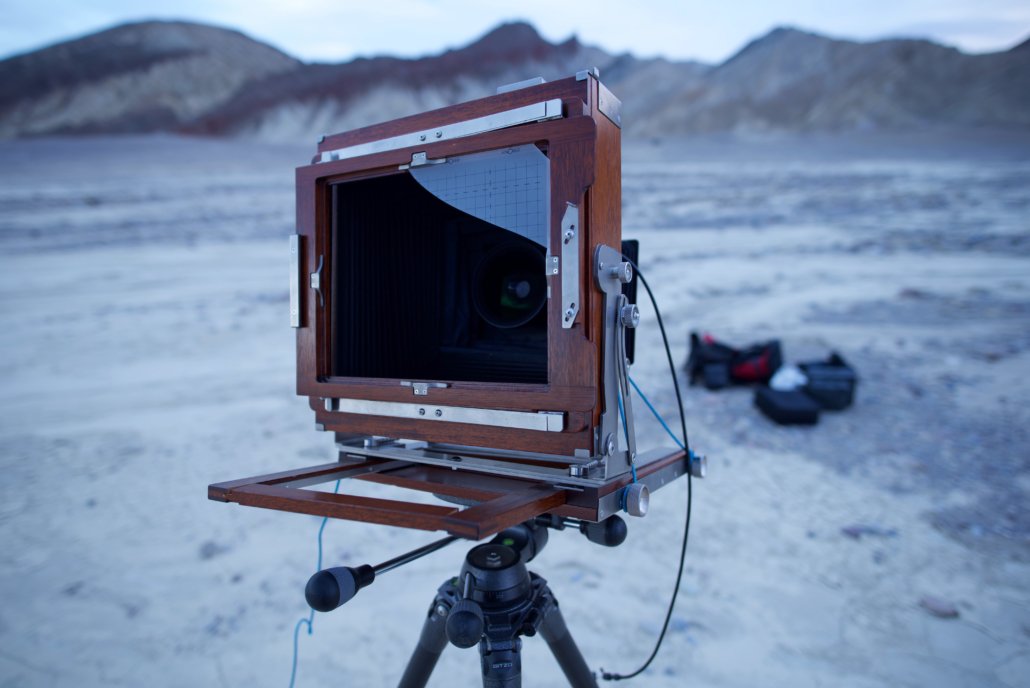
Following that trip, I set out to find the most effective way to anchor the tripod to the ground. After testing several different methods, I learned that a single tether from the center of the tripod to the ground was the best method.
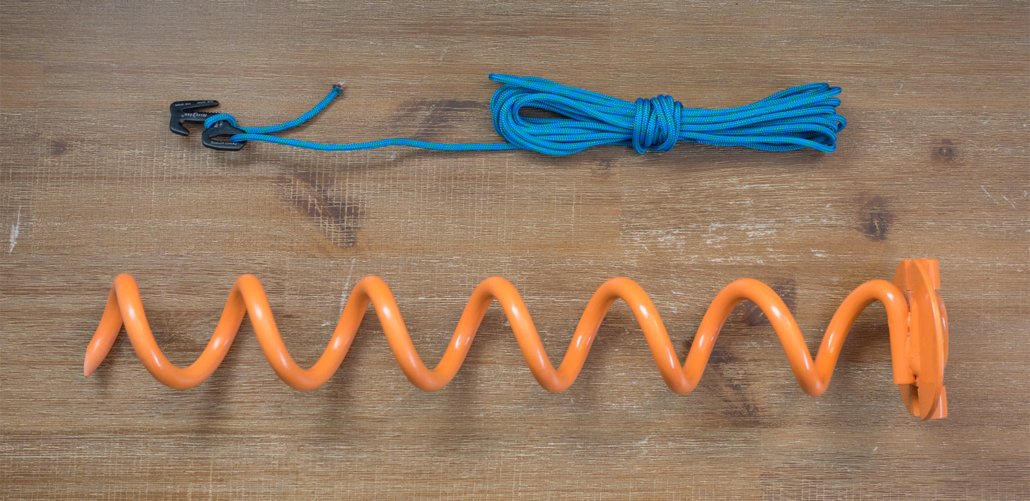
At my local hardware store, I bought a heavy duty 18” metal coil ground screw that looked like it would work well in the desert, especially areas with deep sand. At REI, I purchased some strong cord (very similar to paracord), and a multipack of Nite Ize Figure 9 fasteners that allow me to tension cord without the necessity of a knot. They are a huge time saver, and worked great for this application.
This setup is incredibly simple to use. Start by placing your tripod, then sink the orange sand screw into the ground at the center point of your tripod legs. Most tripods will have a hook or some sort of attachment to hang weight. Run the cord in a circular fashion between D-Ring of the ground screw and the tripod hook, then use the Nite Ize Figure 9 to tension the cord to itself and to lock it in place.
This technique paid off on my recent visit to Death Valley National Park. On one occasion, I left my camera overnight in some incredibly windy conditions, and it survived the 40mph plus winds without any issue. I used it again the next day to hold my camera steady while composing a photo in some strong afternoon wind. It was great not having to always keep a hand on the tripod to prevent it from tipping over.
I am very satisfied with this method, and plan on using it for future trips when the conditions require it, and where the use of a ground screw won’t harm the environment.
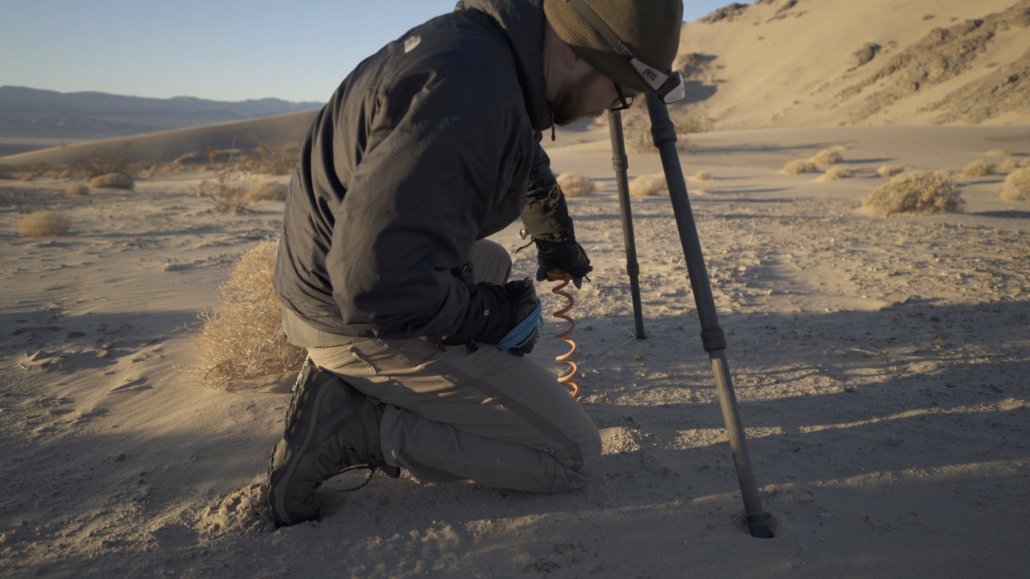
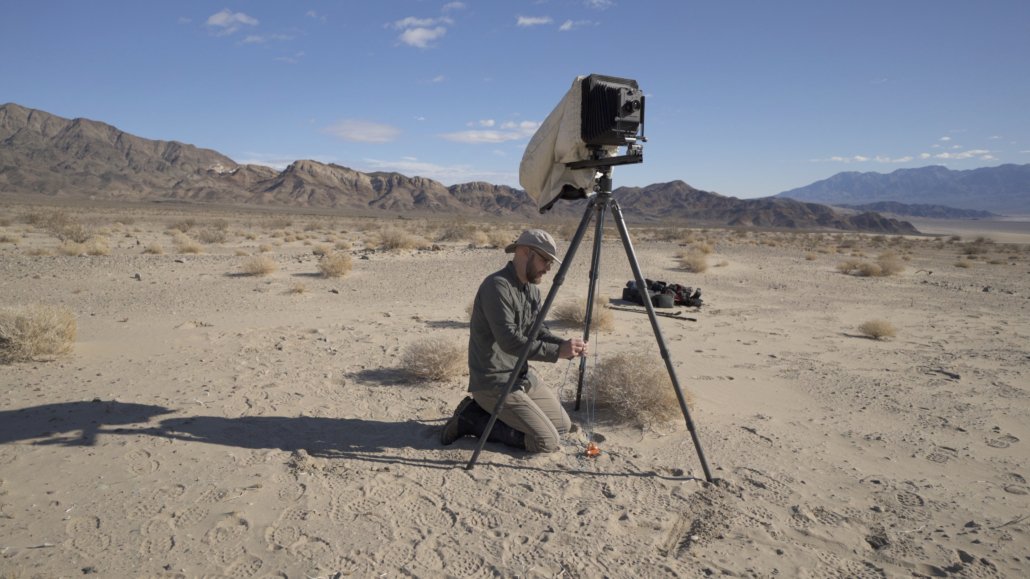
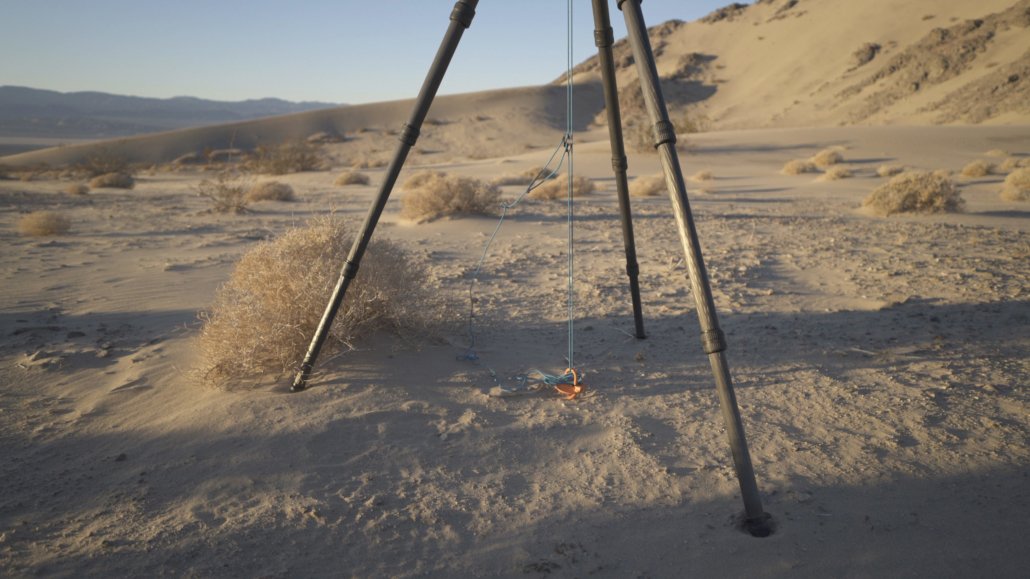
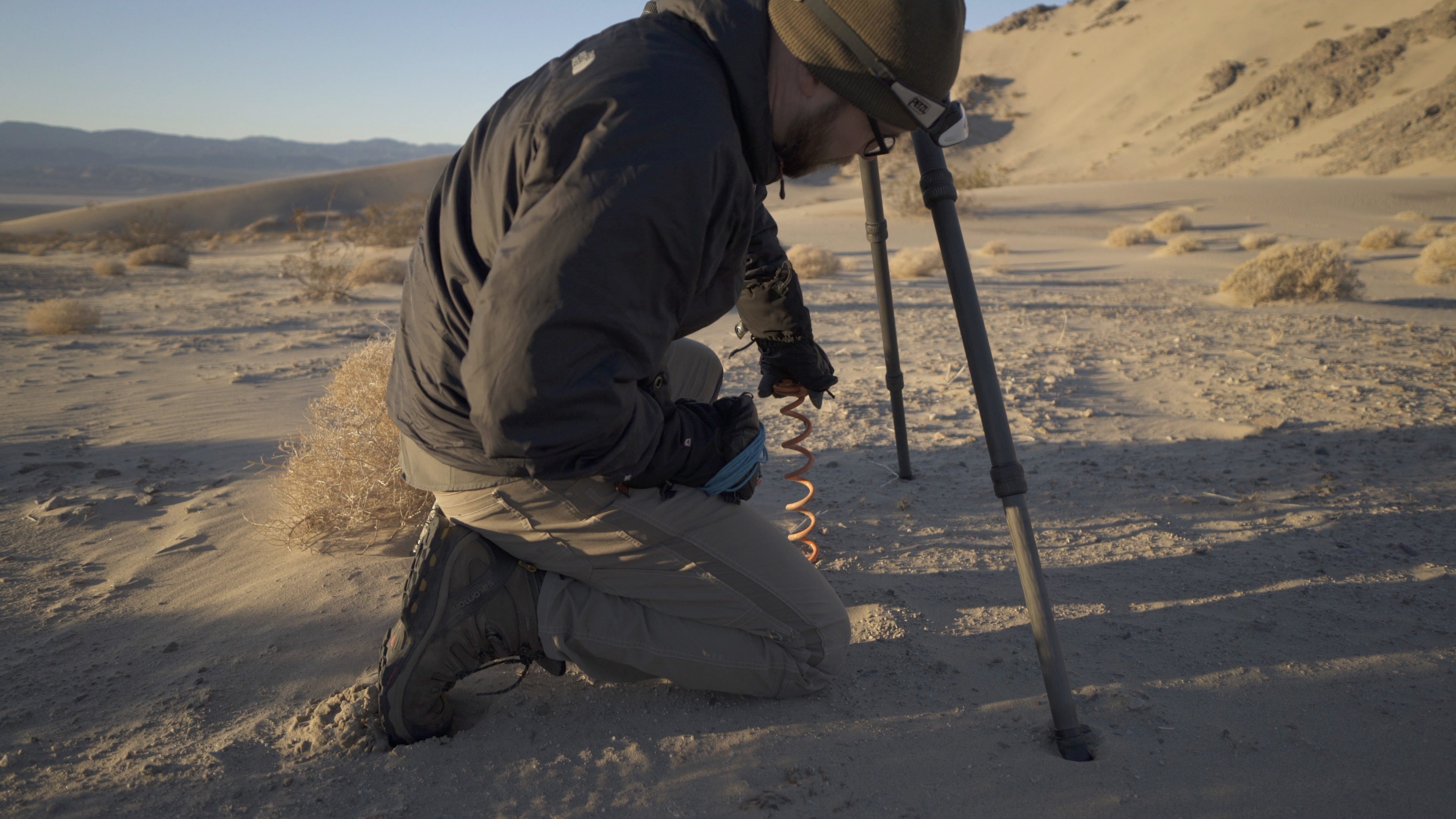
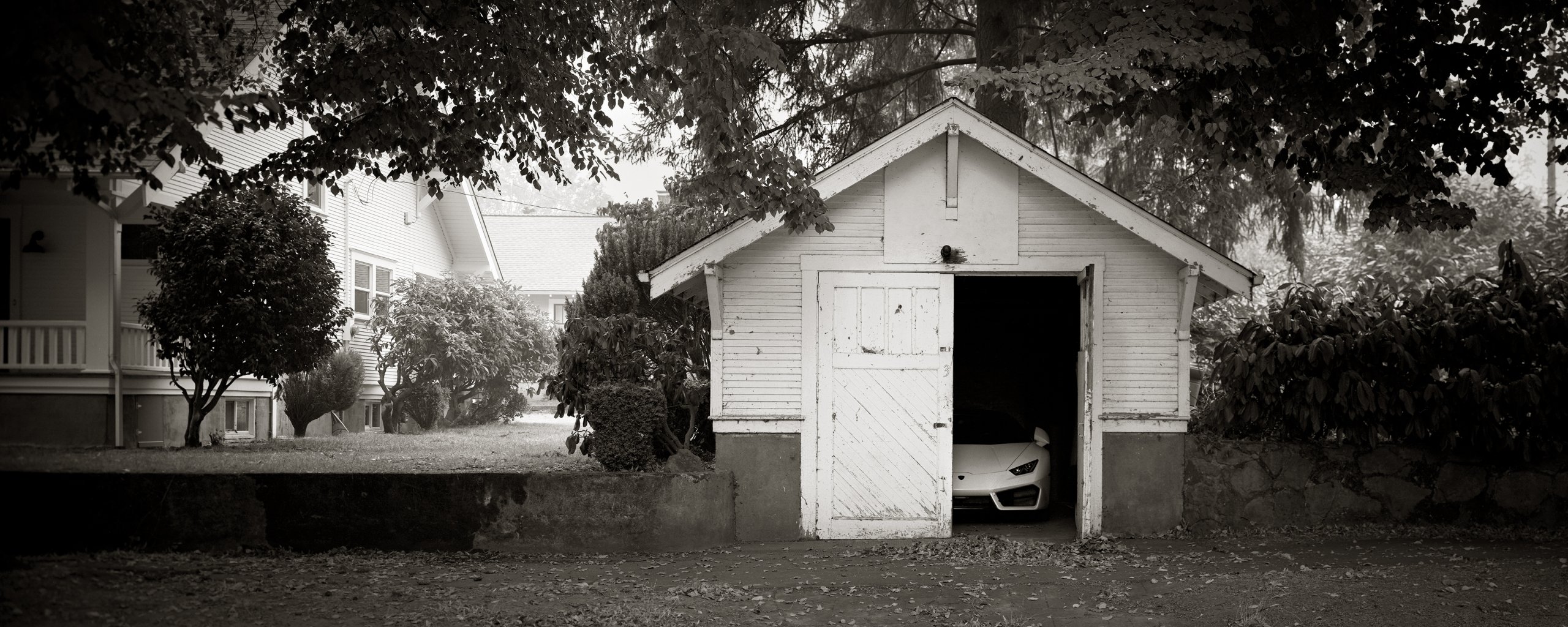
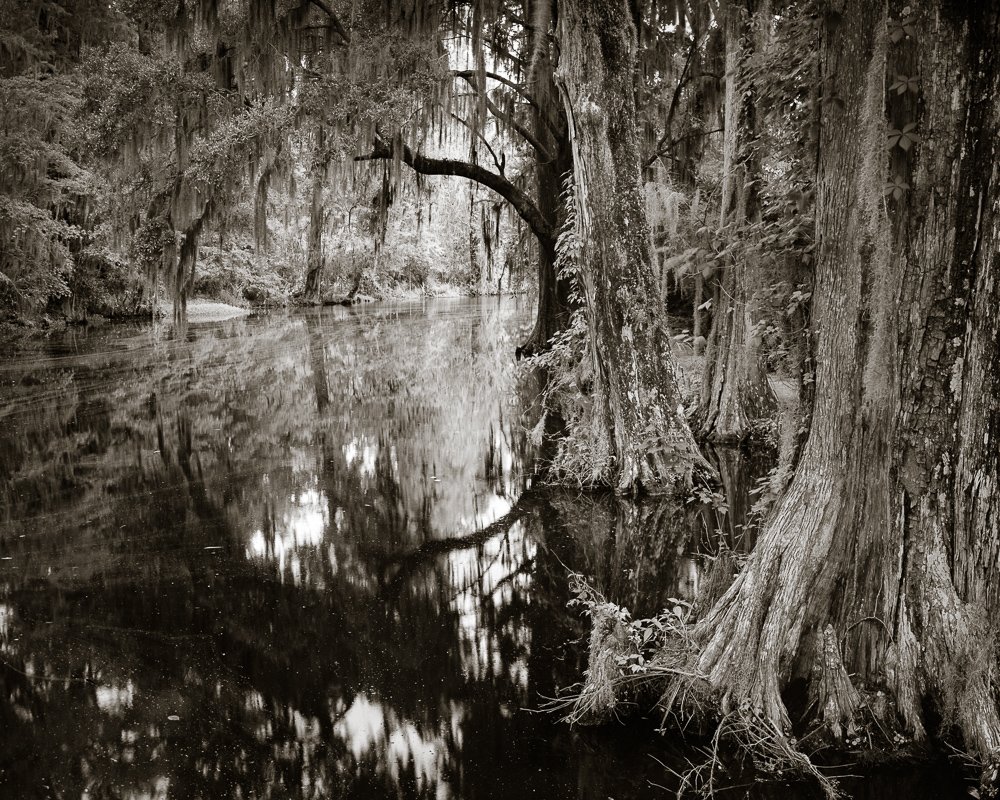

0 Comments